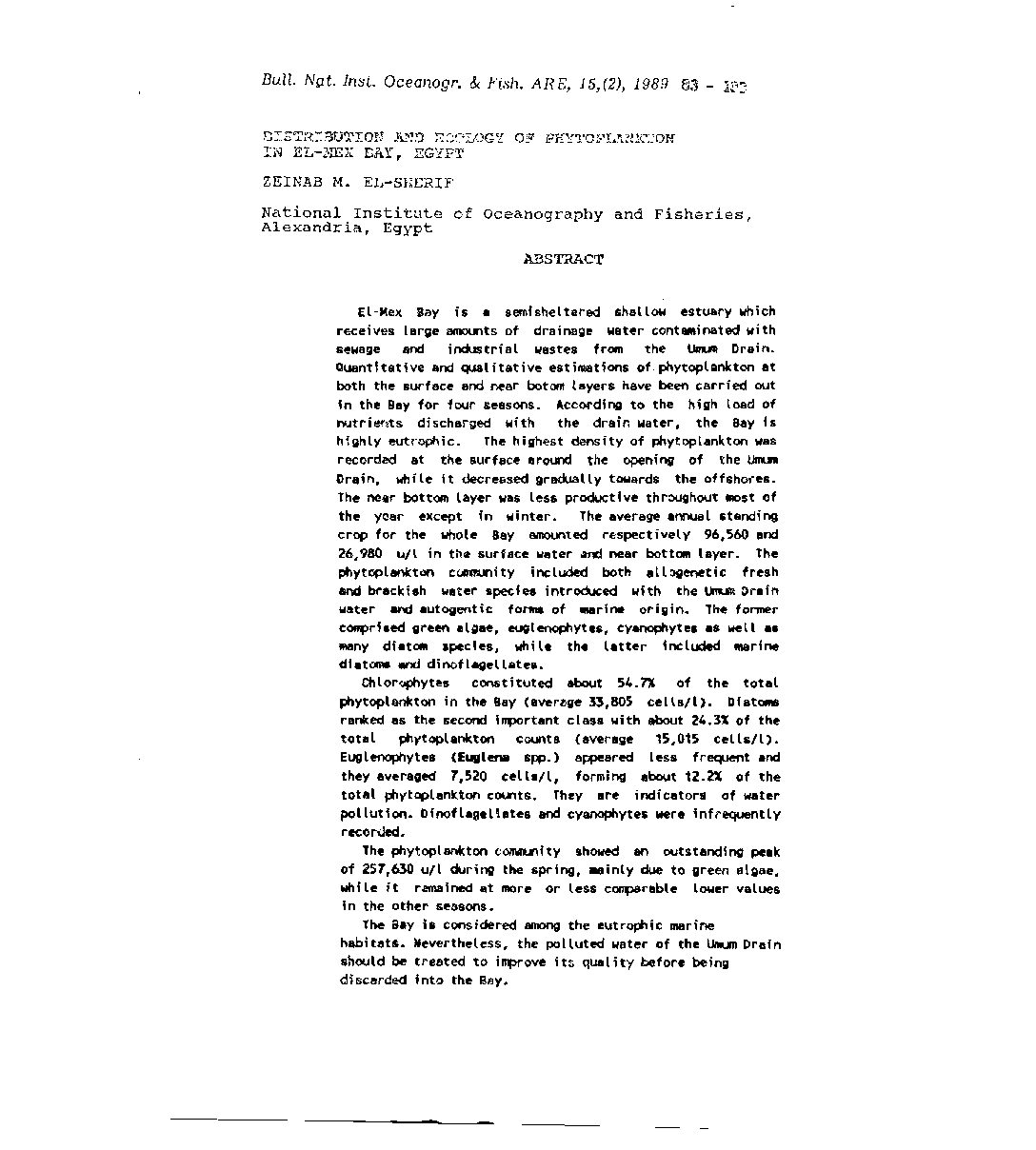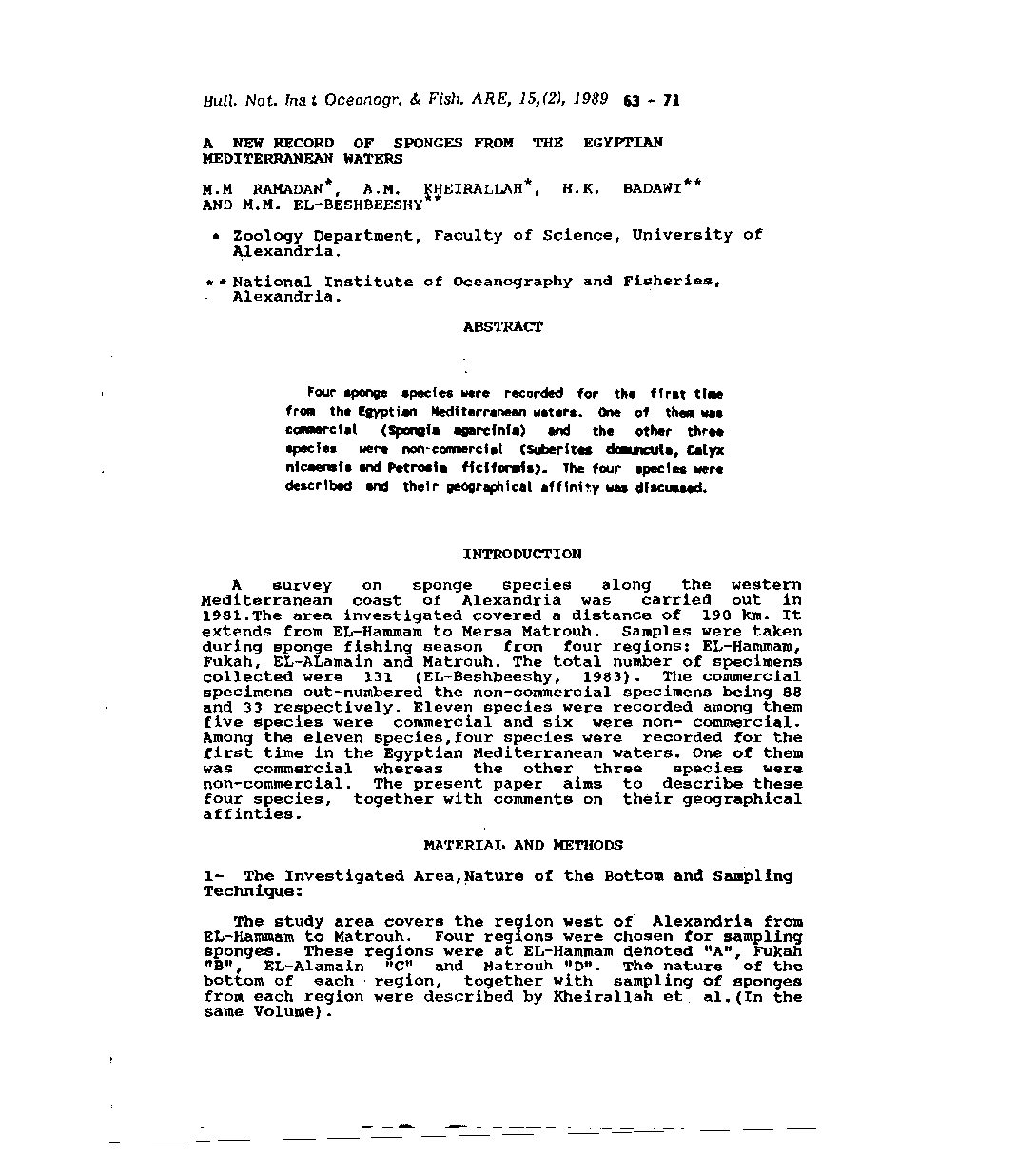Categories
vol-15DISTRIBUTION AND ECOLOGY OF PHYTOPLANKTON IN EL-MEX BAY, EGYPTZEINAB M. EL-SHERIF
National Institute of Oceanography and Fisheries,
Alexandria, Egypt
ABSrrtACT
El-Mex Bay is a semisheltered shallow estuary which
receives large amounts of drainage water contaminated with
sewage and industrial wastes from the Umum Drain.
Quantitative and qualitative estimations of. phytoplankton at
both the surface and near botom layers have been carried out
in the Bay for four seasons. According to the high load of
NJtrients discharged with the drain water, the Bay is
highly eutrophic. The highest density of phytoplankton was
recorded at the surface around the opening of the umum
Drain, while it decreased gradually towards the offshores.
The neBr bottom layer was less productive throughout most of
the year except in winter. The average annual standing
crop for the whole Bay amounted respectively 96,560 and
26,980 ull in the surface water and near bottom layer. The
phytoplanktl3l”l cOlIIlUlity included both allGgenetic fresh
and brackish water species introduced with the Umum Drain
water and autogentic fortll8 of _rine origin. The fanner
COll’f>rised green alllae, euglenophytes, cyanophytea as well as
Nny diatOM species, whi le the latter included _rine
diatome end dinoflagellates.
Chlor~ytes constituted about 54.7X of the total
phytoplankton in the Bay (average 33,805 cells/l). Diatoms
ranked as the second important class with about 24.3l of the
total phytoplankton counts (average 15,015 cella/l).
Euglenophytes (Eugl_ spp.) appeared less frequent and
they averaged 7,520 cellsll, forming about 12.2l of the
total phytoplankton counts. They are indicators of water
pollution. Dinoflagellates and cyanophytes were infrequently
recorded.
The phytoplankton COIIlflU’li ty showed an outstanding peak
of 257,630 u/l during the spring, mainly due to green algae,
while it ramained at more or less c~rable lower values
in the other seasons.
The aay is considered among the eutrophic marine
habitats. Nevertheless, the polluted water of the Umum Drain
should be treated to improve its quality before being
discerd~ into the Bey.







